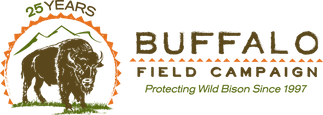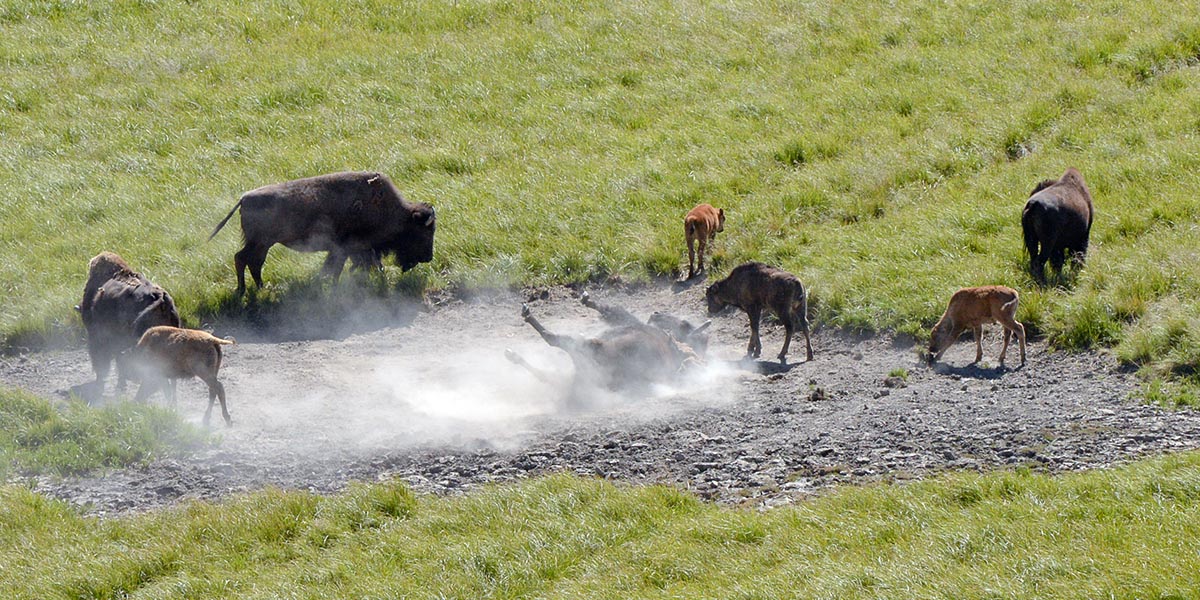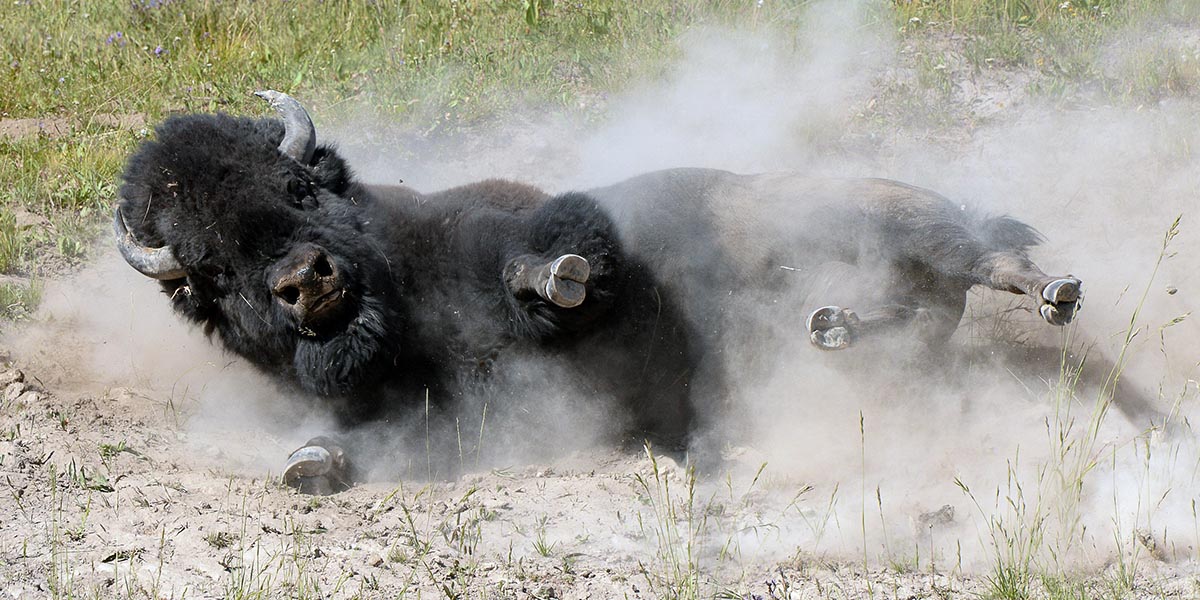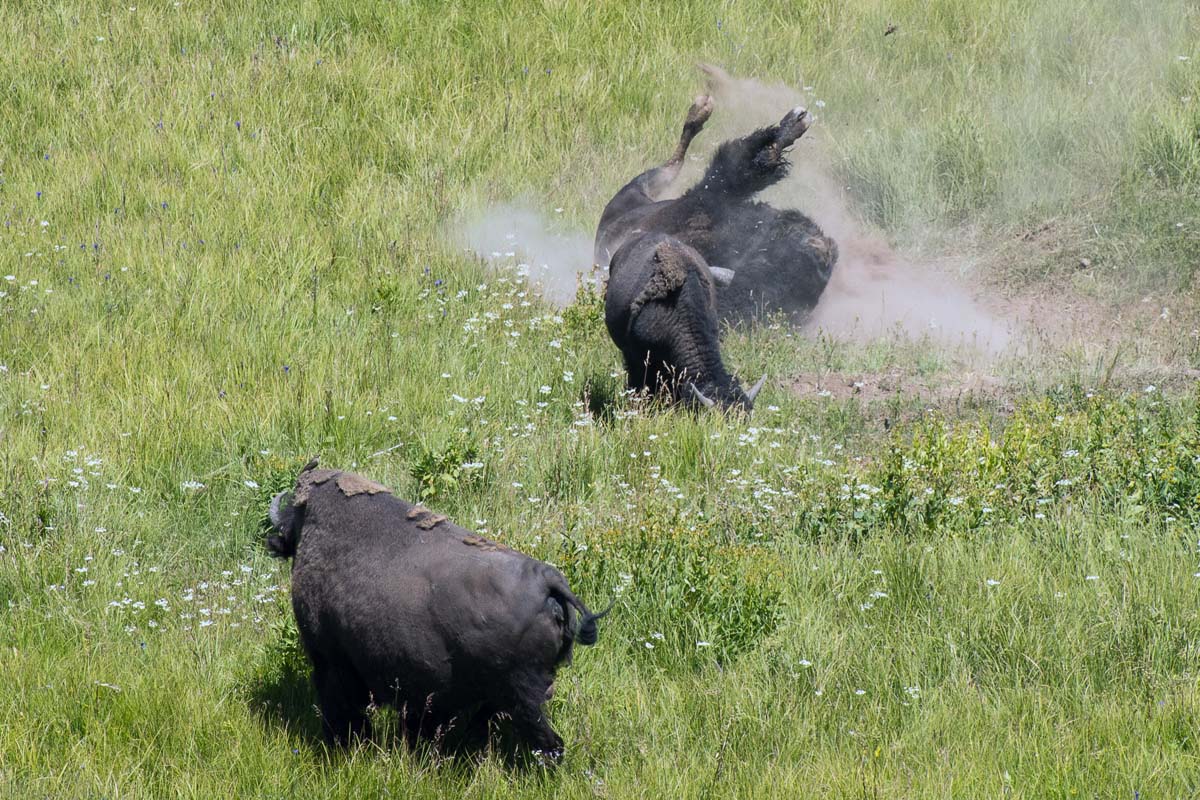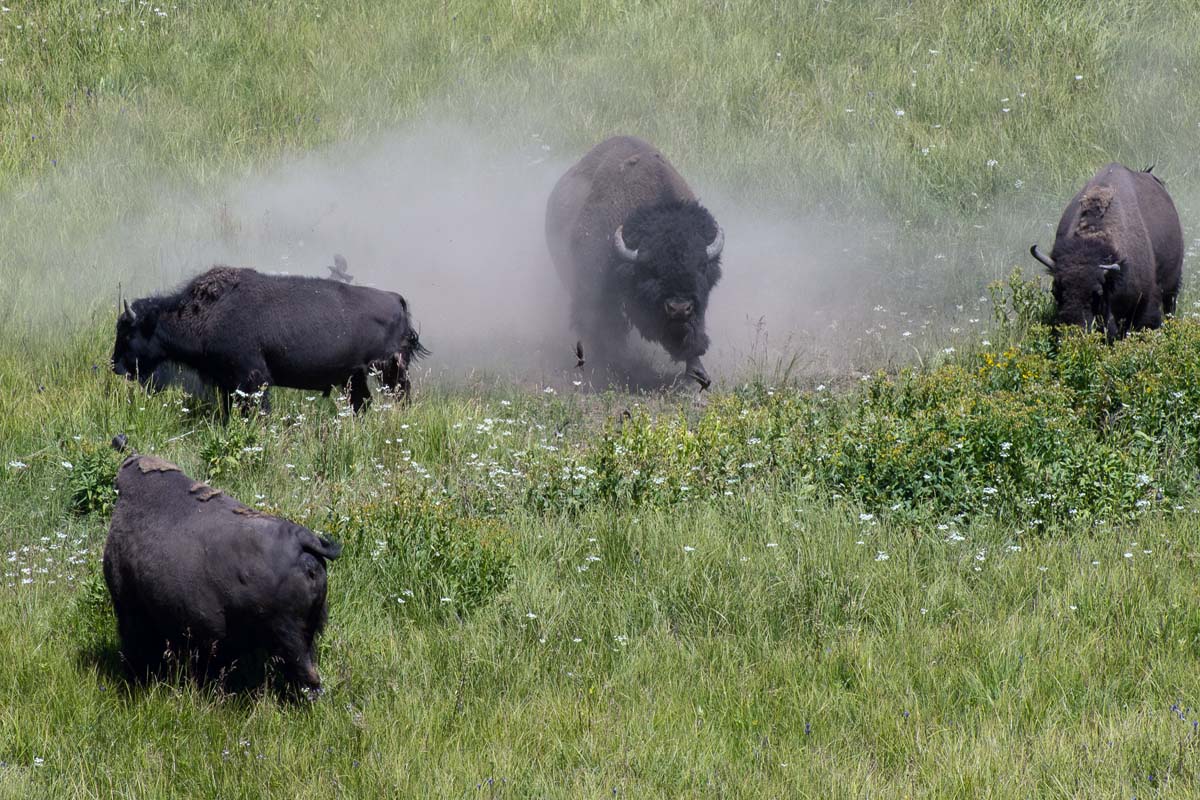It is estimated that 30-60 million Buffalo (Bison bison bison) roamed the North American continent prior to their systematic elimination caused by the actions of Euro-American settlers.
In the early 19th century, the range of the plains Bison spanned as far north as the present-day Canadian province of Saskatchewan to the state of Texas.
As a keystone species coupled to North American grasslands, Bison have a large impact on their environment and many species depend on their daily and annual migratory activities to thrive.
One example of Bison behavior that positively impacts the great plains ecosystem is wallowing.
Wallowing is when a Bison repeatedly rolls in dirt or mud and creates depressions in the ground called wallows. Seeds caught in the Bison’s fur will be dispersed and when the spring rains come, these wallows become small wetland habitats home to many different plant and animal species. As Bison herds migrate and graze or stomp in various areas, they promote plant species diversity. The grazing pattern in the prairie grasslands creates varied conditions for a number of different plant and animal species to thrive.
The protection of Bison is essential to maintaining the ecological health and balance of the Greater Yellowstone Ecosystem.
Johanna Duncan - Internship contributor
Wild Bison 2024-25 Field Season Internship
Renewing the Native Food Traditions of Bison Nation
By Gary Nabhan
This annotated list highlights certain food traditions of Bison Nation (the Great Plains) that could be restored concomitant with the restoration of free-ranging bison to large tracts of the short-grass plains and tall-grass prairies. The RAFT consortium offers this preliminary list to encourage more collaboration among conservation biologists, restoration ecologists, the Intertribal Bison Cooperative, wild foragers, hunters, chefs, nutrition educators and local food system activists.
The reintroduction of bison to a more extensive area of short-grass plains, tall- grass prairies, and adjacent savannas will no doubt enhance the spatio-temporal variation of plant cover, and biodiversity as a whole. In particular, it should promote a greater heterogeneity of microhabitats such as buffalo wallows. This in turn may increase the productivity and diversity of edible plants and small game available as foods to the cultural communities residing in Bison Nation.
For most of the last ten thousand years, the plains bison has served as the keystone species for the heartland of North America. They have modified both large landscapes and microhabitats through differential grazing, especially in areas recently-burned by wildfires; by wallowing; by tree-rubbing and pruning the branches of woody species; and by their deposition of seed-laden, nitrogen- rich feces and urine across large landscapes. The interaction of their grazing and movement patterns with fire, flood, and drought historically set up a patch dynamics that favored greater plant diversity among sites.
When millions of bison were utilizing the grassland, savanna, and woodland habitats of Bison Nation, the resulting wallows numbered in the hundreds of millions, and radically shaped the hydrological dynamics of their watersheds.
This created suitable habitat for many annual and perennial flowering plants, anuran lizards, and land birds, some of which favored muddy wallows while others favored sandy or dusty ones. While not all the species growing in wallows were historically used as food by humans, it is clear that certain edible plants were indeed more abundant when there was a patch dynamics fostered by bison than there are now on lands managed for beef, wheat, corn, or soybean production.
